https://www.youtube.com/watch?v=EnXb1u9UoBU
The Best Way To Make Pasta From Scratch _ Epicurious 101
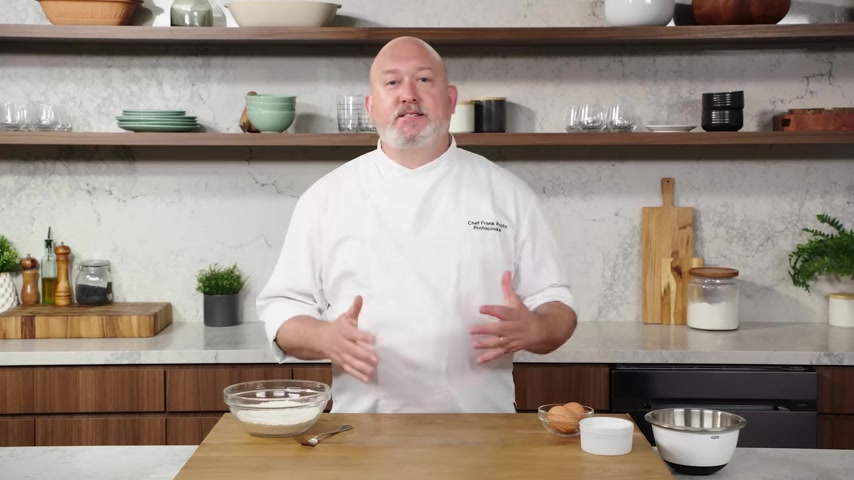
I'm Frank Proto .
I'm a professional chef and color instructor .
And today I'm gonna show you how to make fresh pasta .
And today I'm gonna show you how to make fresh pasta at home with eggs .
And without , this is how to make pasta .
101 boxed pasta is an everyday workhorse .
Making your own pasta at home or fresh pasta makes the meal a little more special .
It just takes a little time and technique in order to get it right .
I'm gonna make two doughs today .
One with eggs and one without for my egg pasta .
I'm using an Italian double zero flour , double zero flour is more finely ground than an all purpose or a bread flour .
All that really means is that this flour is milled or ground up really fine .
It supports that whole fine delicate pasta that egg pastas make .
But if you don't have double zero , use it all purpose or a bread flour .
If that's what you got , use it and then I'm gonna take my hand and just make a big , well , make sure you make this well , big enough to hold the eggs .
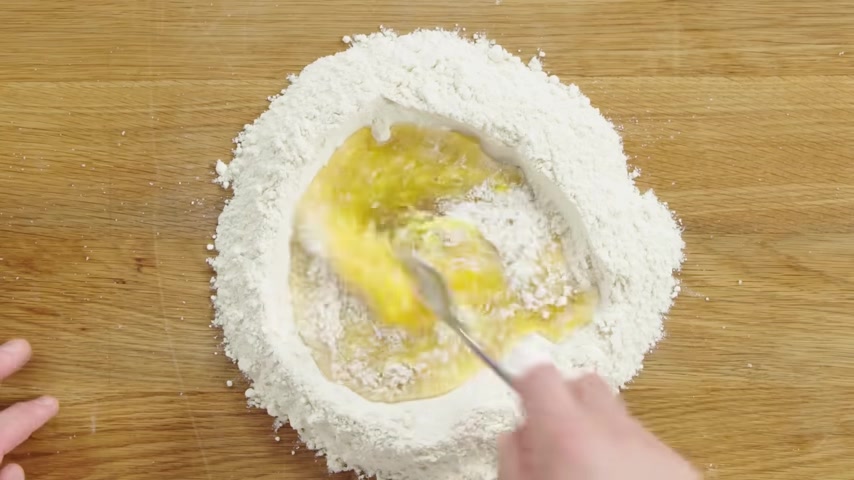
If you have a tiny , well , and then crack two eggs in the eggs overflow and we don't want that .
Make it big .
Don't be afraid , make a nice big volcano .
Whenever I make fresh egg dough , I usually do one egg per person .
So here I have about two cups of flour to two eggs .
So one cup of flour per egg .
I'm gonna season this as well .
A fair amount of salt .
I'm scrambling this just for consistency and so that my dough is uniform throughout .
So once they're whisked , I'm starting to bring the flour in .
Try not to break your volcano at this point .
If you put this into a mixer , you can just throw everything in , turn it on and let it go .
But I'm doing it the granny style of the nona style .
And basically , I'm incorporating the flour a little at a time so that the eggs don't spill out all over my surface or my counter .
So once we get to a point where it holds its own shape , now , I start to kind of just mix a fair amount of flour in there .
What's great about this technique is the dough is only going to take as much flour as it needs .
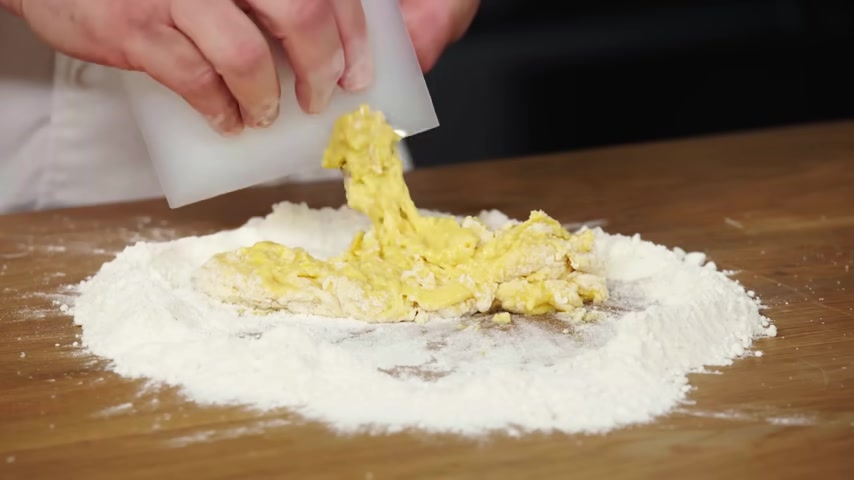
So at this point , I usually get rid of my fork .
I use my dough scraper , you can use your fingers if you want .
Now I just start chopping in some of this flour .
So I'm scraping up all the bits on the bottom of the board .
Basically , what I'm looking for here is that my dough is not wet anymore and it's not going to be sticking all over my hands .
Now , my dough has come together , we're gonna start to need it , needing the dough activates or works the gluten .
And basically gluten is a protein that gets stretchy and springy after you work it gluten is what makes your pasta chewy .
If you don't work your pasta dough enough , you're not gonna get that nice chewy bite to your pasta .
And basically what I do when I need , this is I push down with my body weight , push away from me , fold it in half , give it a quarter turn , push down with my body weight , fold it in half , give it a quarter turn .
And I just keep doing that until I get a nice elastic and smooth dough .
And this is what I'm looking for .
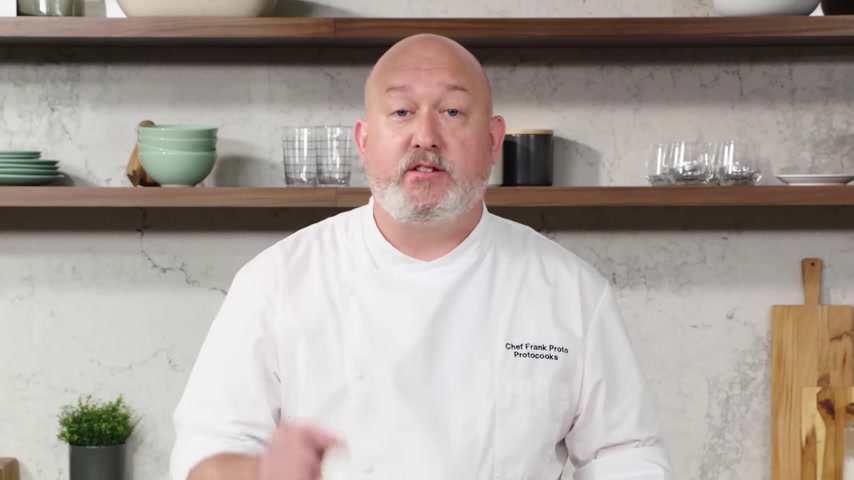
Press down , it's going to spring back .
That's how I know I have some gluten formation in my dough .
If you press down and it stays down , you either need to add more flour or you need to keep needing my dough is nice and elastic .
I'm gonna wrap it in a piece of plastic .
And the reason I do this is so that the dough doesn't dry out anymore .
If it dries out , it's gonna get kind of like an alligator skin , it's gonna be really hard to roll out .
If I try and roll it out at this point , I'm gonna roll it and it's going to spring back .
If I let it relax for about 20 to 30 minutes .
When I roll it , it's gonna hold that nice flat shape .
I'm using plastic .
If you don't want to use that , you can wrap it in a clean towel or you could take a bowl and turn it upside down over the dough .
That's my egg dough .
I'm gonna let this rest for about 20 minutes and then we can roll it out .
Pasta dough made with eggs tends to be a little more delicate .
A little richer .
Whereas pasta doughs made with just water tend to be hardier and hold heavier sauces a little more dense .
I usually refer the one without as a semolina dough because I'm gonna use semolina flour .
It has a little more texture to it .
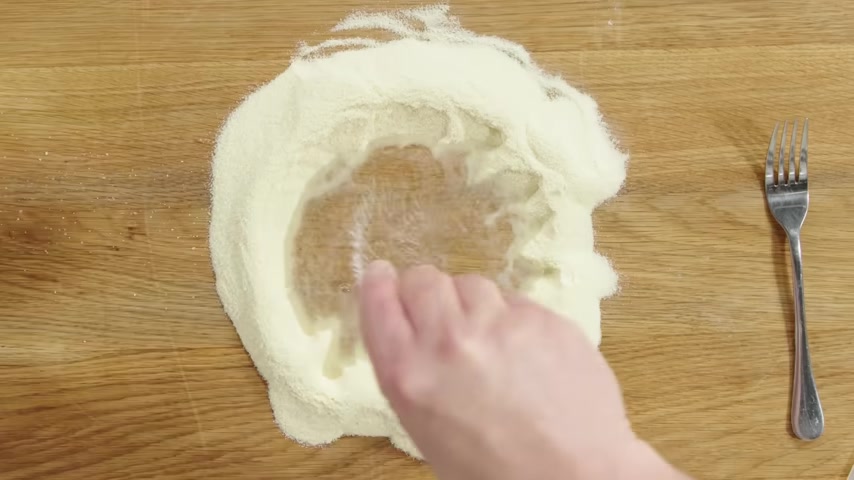
It's a little more grainy than a finely ground flour .
And most of the time that you buy boxed pasta , it's usually made from water salt and selina flour .
So I have about two cups of semolina and about two thirds cup of water and a hefty pinch of salt .
Don't break the walls of your volcano and start working in your semolina .
I love using bent scrapers that cost about a dollar and they're a great gadget to have to clean up surfaces to cut dough and they're totally worth it .
It's a super versatile piece of kitchen equipment that costs nearly nothing .
Ok .
So now that it's coming together , I can see that the dough is just a little dry .
So , all I'm gonna do is add a little bit of water .
You don't want to go crazy here .
If you have to add water , if you have to add flour , you do it in small measures .
You might be wondering , can I over mix this and form too much gluten ?
Yes , you can .
But by that time you'd probably be passed out on the floor because you're so darn tired , your arms will wanna fall off and we're gonna wrap this for the same reason .
We wrapped the egg dough .
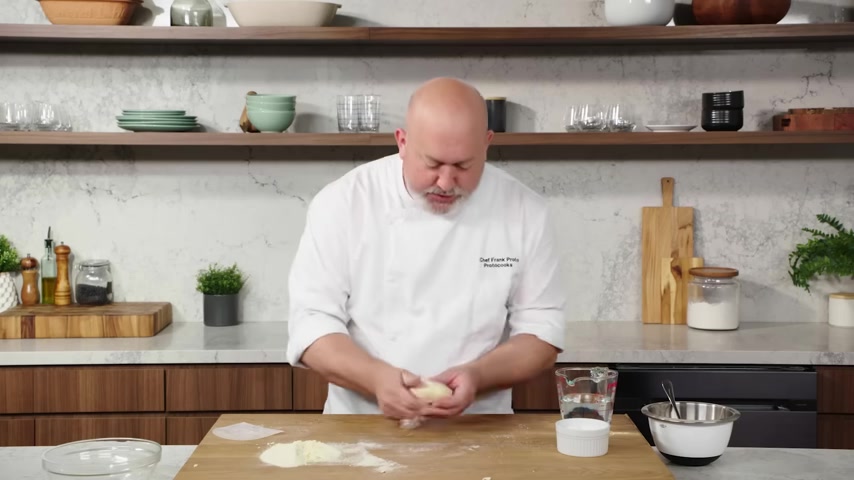
We didn't want it to form a skin .
Put it aside , let it sit for about 20 minutes and then we can roll that out too .
We're gonna start with the selina dough .
I'm gonna put the egg dough aside , forget about it for a sec .
Just , it's gonna be ok .
Just leave it alone .
Cavill is basically a smooth outside with a shell like interior .
It looks kind of like an elongated seashell .
Cavitt tends to be a little more dense .
It tends to be a little more of a hearty and chewy pasta .
That's why this Semolina dough works really well for it .
Cavatelli can be formed with just your hands .
Uh I have a couple of pieces of equipment I'm gonna use as like options .
You can see different options for it .
I'm gonna cut a little piece of the dough off and leave the rest covered because I don't want this to dry out .
What I'm gonna do here for the Cavill is just roll this out into a snake .
So I'm just gonna cut these into kind of a little long nuggets .
I try and keep these at a uniform size so that all the pasta cooks evenly , they don't have to be exact .
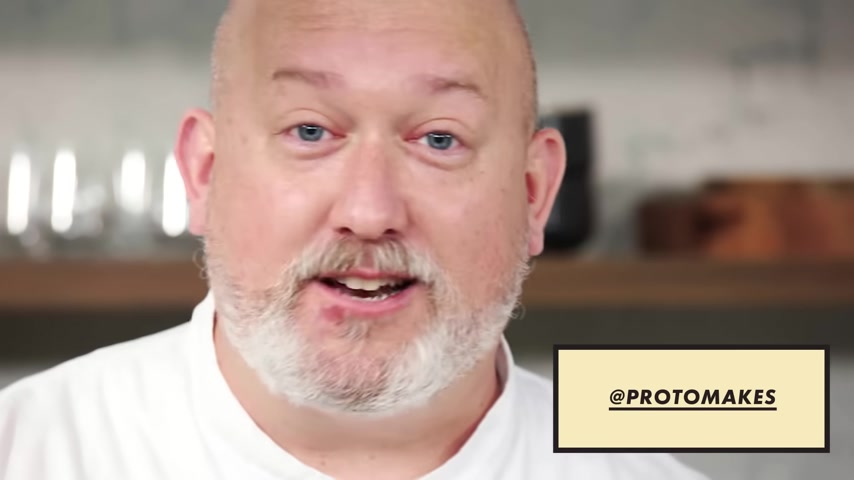
Just try and keep them as uniform as possible .
Now , you could buy a board , they're about 10 bucks online .
Uh But I had a tree go down in my backyard and I made this one myself .
You could see more projects like this on my other channel .
Proto makes this to me is the best way to make cavatelli pasta shapes are basically made in order to hold or capture a sauce .
So this method to me not only gives you the little cup that holds the sauce , it gives you some nice ridges on the outside .
So you press your dough ball down and squeeze right .
So I'm pressing my dough ball down , pushing down and away from myself and making that nice cup .
Those ridges and that cup in the middle are the surface area that holds your sauce .
So this to me is the more classic shape .
If you want to use your finger , you can take your thumb , press down and roll away from you to form that nice kind of Cavatelli shape .
You can see , there's like an interior shell a outside .
So that's , that's our nice shape we got there .
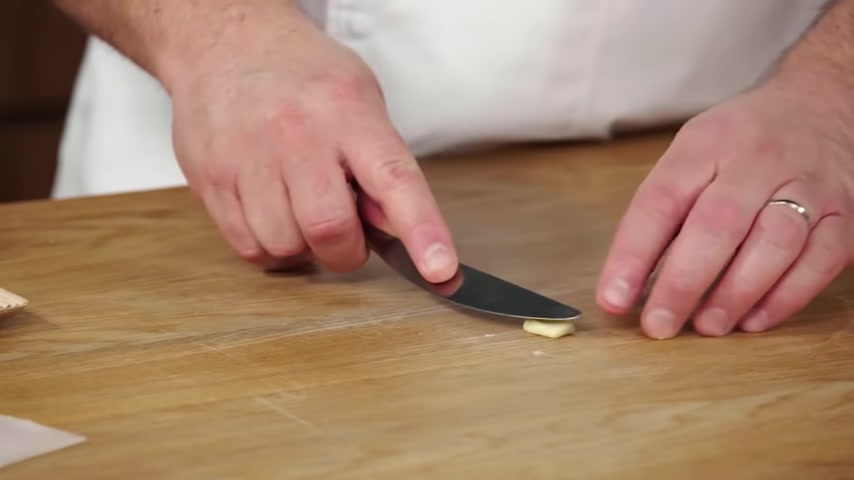
That's our Cavill with no special equipment .
Just to prove that it can be done .
Grandma's everywhere .
I've been doing this for years .
It's not complicated .
Another way to do this is with a butter knife and this one I'm gonna pull towards myself , light angle to the board .
A little bit of downward pressure and pull towards yourself .
The downward pressure lets the pasta kind of stick to the board a little .
It kind of squeezes the pasta out the other end .
At the end of the day , there's really no difference between the knife and the finger technique .
Some people just feel more comfortable with a knife .
They get a knack for it .
It's kind of a knack thing .
The next method is an overturned fork with a fork technique .
I just take the fork .
I'm not using it like I'm eating , I turn it upside down .
I'm kind of giving these a little squish and I'm pushing down into the fork and away from myself just to kind of form that cup .
What I'm accomplishing here with this is I'm making really fat ridges .
So the sauce doesn't just sit inside the seashell .
It grabs the outside as well .
Let's put the Cavatelli aside and work with our egg dough for my egg based dough .
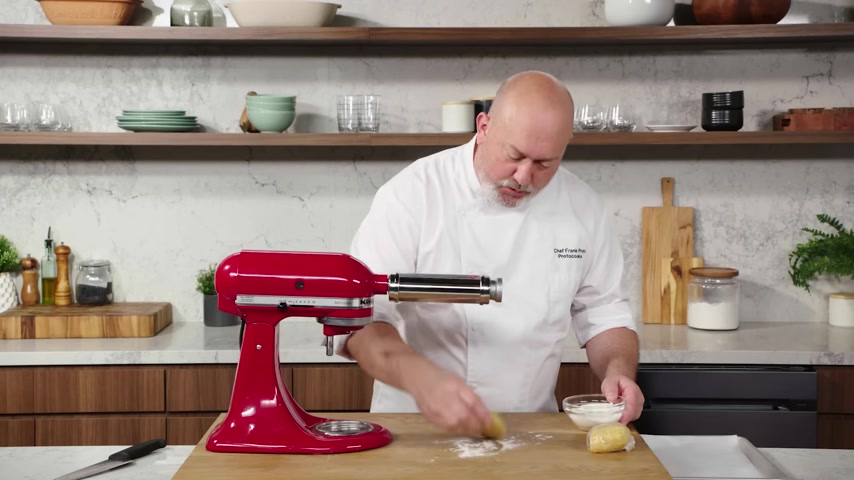
I'm making a papa which is a long , thick , wide pasta .
It's kind of like fettuccini , but like triple is wide .
This is a kitchenette with a flat roller attachment .
This makes it go fast and easy .
I have my dough ball .
I'm gonna unwrap it .
I'm not gonna use it all because if you try and put all of this through the machine , it's just gonna shred it .
I'm gonna do about one third of it right now and I'm gonna recover .
I'm just gonna flatten it out and I'm gonna dust it lightly with some flour .
We didn't need flour for the semolina dough because it's a nice dry dough .
This has a little more moisture to it .
So I'm just going to put some flour on the outside .
So it doesn't stick to our rollers .
I have my roller on one now .
One is the thickest , some people might think one is the thinnest but no , I roll it through with one hand and I get it with the other hand .
One thing I like to do now is give it a fold and all that .
This does is make my pasta a little more square and even , and I'm going to leave it on that number one setting and have it go through again .
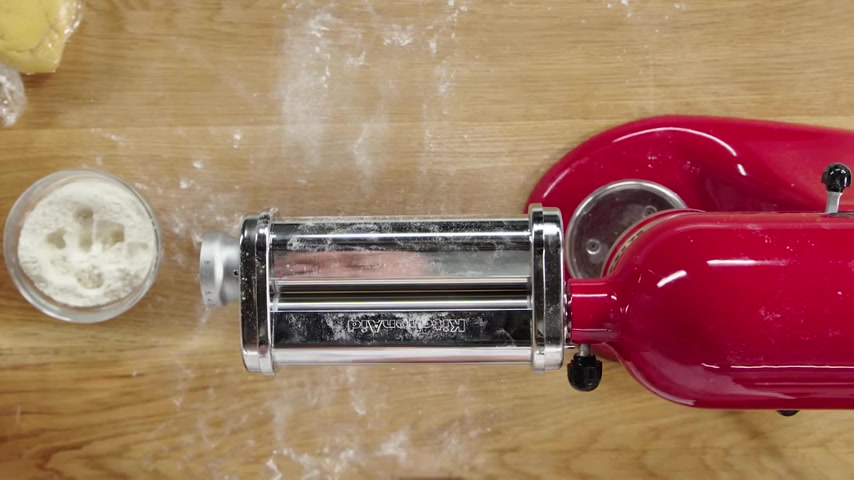
I'm going to lightly dust and I'm gonna go up one , number to two , going from 1 to 2 , makes our pasta dough a little bit thinner .
As long as there's enough flour on here , you can go down another 1 to 3 and make it a little thinner .
My goal here is to go from number one to number seven .
Number eight tends to be a little too thin as you get faster with this and better at this , you can just go down the numbers at this point .
It's starting to get long and a little unruly .
I like to use the backs of my hands , not my fingers because I don't want my fingers poking through .
Now , I'm down to seven , which is the number that I want to hit .
Roll it into the machine .
If you're going to do this by hand , you would basically roll this out with a little flour and a rolling pin and then you need a nap afterwards because it takes a really long time to do so .
At this point , we can cut this in half and we have two nice sheets of pasta .
What I like to do to get my Papper doll at this point is to flour the inside really well .
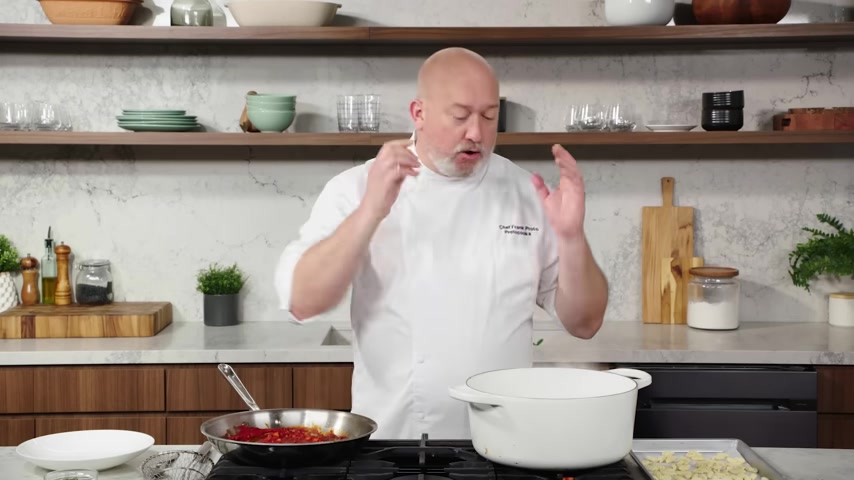
So it doesn't stick to itself and then we're gonna roll it up and then I get some nice even clean cuts , lay this out flat on a tray .
I try not to stack it because I don't want it sticking to itself .
You could put it really nice and close to each other , right ?
Maybe I'll stack a little and that is my finished Papper dough .
So now we have our finished Cavill and Papper Dell time to cook them .
I'm gonna cook the pasta now .
And I'm starting with the Cavatelli .
I have a pot of water here that I'm gonna salt .
Some people would say sea salty .
It's a good start .
We salt the pasta water so that the pasta absorbs the salty water .
Hence , our pasta is seasoned .
If you salt the pasta at the end , basically , you're gonna have a salty sauce with a bland pasta .
This way , our pasta is seasoned , our sauce is seasoned and it's magic .
The water is seasoned and I want it to be boiling before I add the pasta in .
When I put the pasta in , it's gonna stop boiling .
But I want it to as quickly as possible back up to the boil .
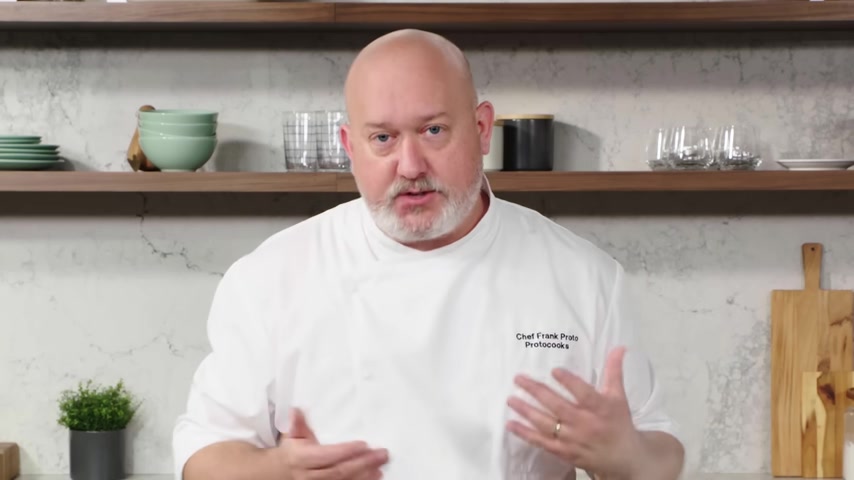
So first of all , the pasta doesn't stick together and it doesn't just sit on the bottom and start to get mushy .
We want this pasta to have texture and if it's not boiling and not moving around , it's just gonna mush out and get soggy water's boiling water is seasoned .
Pasta goes in , give it a stir .
So it doesn't stick to the bottom and it doesn't stick to each other .
How do you know when your pasta is done for me ?
The only way you know that your pasta is done is to actually taste it .
People say throw it against the wall .
What does that prove ?
My pasta is starchy ?
That proves nothing to me .
Beat it , taste it , put it in your mouth hole while my pasta is cooking , I always have my sauce ready to go .
The sauce waits for the pasta .
Not the other way .
Have your sauce hot and ready to go in a pan before you even start cooking your pasta .
Now that my pasta has been cooking for a few minutes , I have this thing .
It's called the spider because it kind of looks like a spider web and it's just a great straining tool to have in your house .
I usually let my pasta just cool a little and then I give it a taste perfect .
I have a little chew to it .
The pasta is cooked all the way through .
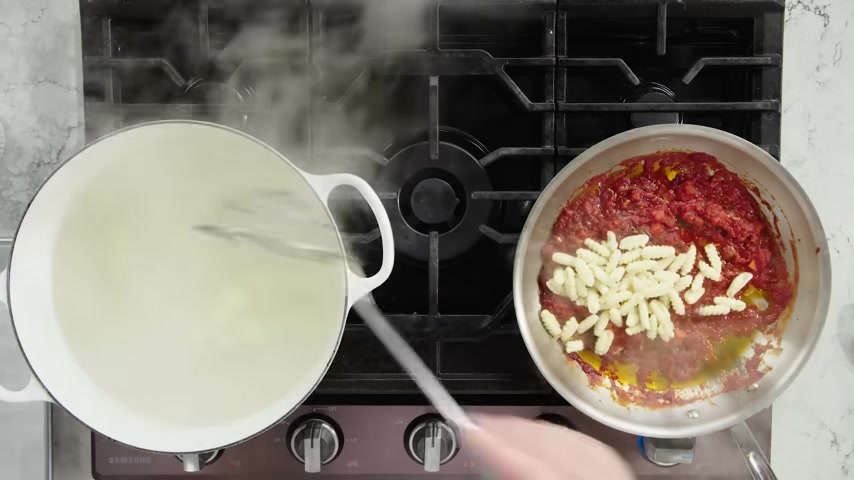
It's not doughy and gummy .
It has some bite to it , it tastes cooked .
So now what I do is I take my spider , I get my pasta out and it goes directly into the sauce .
I don't drain it all that .
Well , I want some of that pasta water in there .
The pasta water has salt and starch and that salt and starch is going to help make my finished sauce a little more creamy .
So my sauce looks a little thick .
I'm going to go into my pasta pot , get some of the water and dump it in .
So it loosens my sauce .
So in Italy we'll cook it about three quarters of the way and finish the cooking process in the sauce .
So it's done cooking .
Let's throw it on the plate a little bit of our basil on top .
And that's my Cavill with a semolina based pasta dough .
I have my Papa Dell from our egg dough .
My water is boiling .
I'm gonna add some salt .
I have my cream sauce here and cream sauce generally gets paired with long thin noodles because it sticks really well .
And we're going to drop our pasta in the Papper Dell will cook quicker than the Cavill .
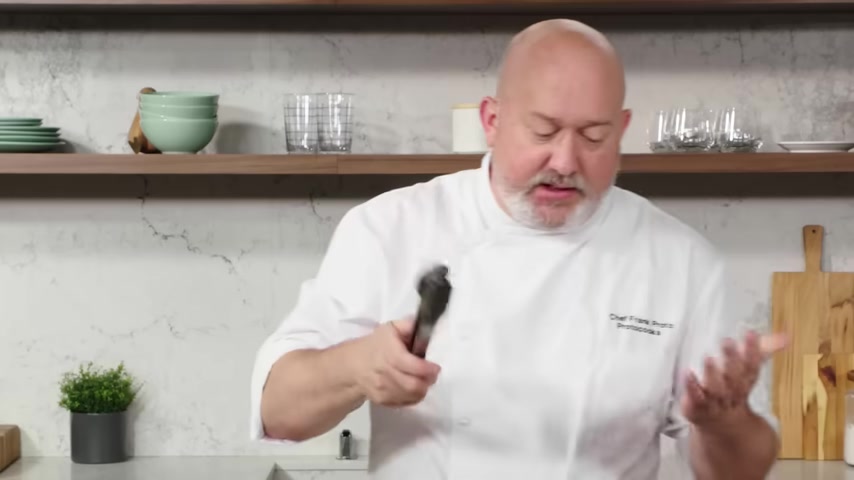
It's only gonna cook for about two or three minutes .
I'm gonna swirl it around .
The Papper Dell is super thin .
That's why it's gonna cook so quickly .
I like to use tongues for long thin pasta .
A spider usually it's kind of just problematic and they fall off the spider .
So I feel like tongues are the best way to go with this .
Let it cool off .
Give it a quick taste .
Smooth , silky , just a little bit of bite to it .
We're gonna take a little bit of that pasta water , swing it around .
It's important to have the burner on here because when we add the pasta water , now it's gonna be too liquid if you want some of that liquid to actually cook off a little and cook onto the pasta .
So you don't want to just do this in a cold pan .
You wanna make sure that it's cooking ?
Ok .
That looks great .
So I get my plate , I'm gonna give this a little bit of a twist .
So it makes a little bit of a bird's nest .
Just get my spoon under it .
So I don't drip everywhere .
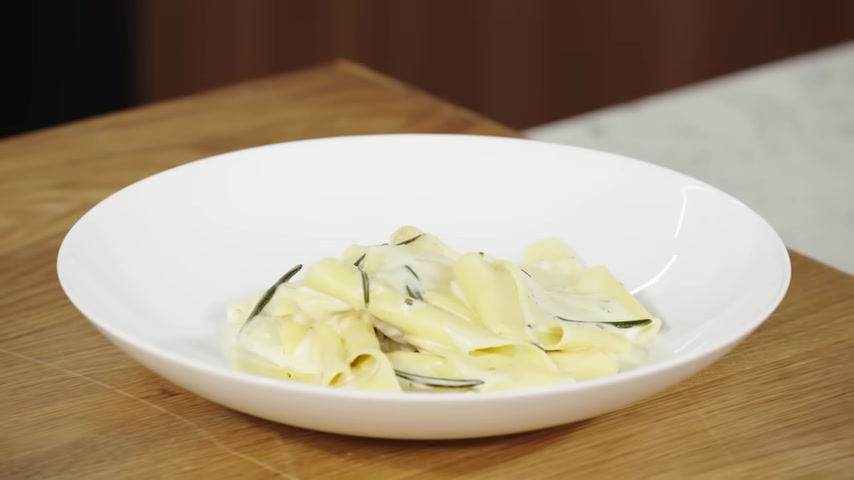
And that's my papa dough made with egg pasta with a cream sauce .
So there it is .
It's our semolina based Cali with a nice rich tomato sauce and our egg based pale with a cream based sauce .
Yes .
It's easy to use pasta out of the box .
But when you make someone homemade pasta , they know they're loved .
It feels like a big hug .
Both of the pastas I made today have simple humble ingredients and a little bit of technique .
And if you follow the techniques that I laid out here today , you will be able to make professional , great pasta at home .
Are you looking for a way to reach a wider audience and get more views on your videos?
Our innovative video to text transcribing service can help you do just that.
We provide accurate transcriptions of your videos along with visual content that will help you attract new viewers and keep them engaged. Plus, our data analytics and ad campaign tools can help you monetize your content and maximize your revenue.
Let's partner up and take your video content to the next level!
Contact us today to learn more.